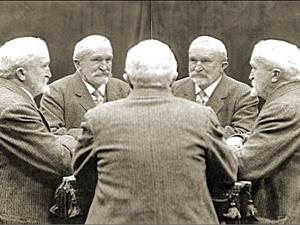
PUMPA - SMART LEARNING
எங்கள் ஆசிரியர்களுடன் 1-ஆன்-1 ஆலோசனை நேரத்தைப் பெறுங்கள். டாப்பர் ஆவதற்கு நாங்கள் பயிற்சி அளிப்போம்
Book Free DemoIf you have one plane mirror, light from the source will bounce off the mirror once and leave the system. When you have more than one mirror, you can create multiple reflections. These multiple reflections can lead to multiple images.

In the image given above, you observe that a man is sitting in between two plane / flat mirrors, which are inclined to each other, you could see multiple images of the same person.
This is because the ‘image’ formed by one mirror acts as an ‘object’ for the other mirror. The image formed by the first mirror serves as an object for the second mirror, and the image formed by the second mirror acts as an object for the first mirror. Thus, we have multiple images of a single body. This is known as multiple reflections.
Multiple reflection of light is the reflection of light back and forth several times between reflecting surfaces.
Example: We can see these type of reflections in showrooms and saloons.
The number of images formed mainly depends on the angle of inclination of the mirrors. If the angle between two mirrors is a factor of 360°, then the total number of reflections is finite.
Consider θ (Theta) is the angle of inclination of the plane mirrors, then the number of images formed is equal to .
- When θ decreases, it results in an increase in the number of images formed.
- When they are parallel to each other, the number of images formed becomes infinite.